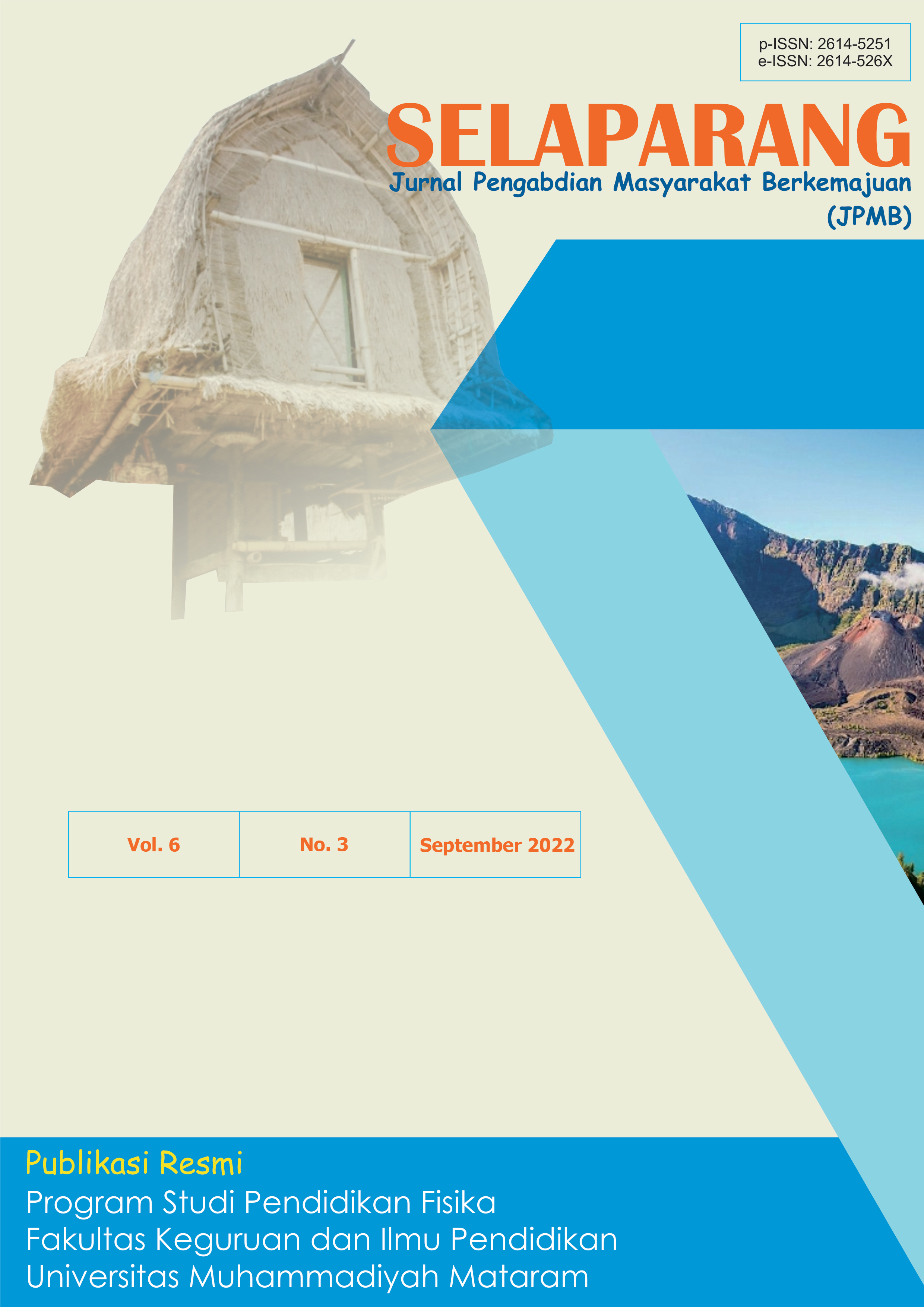PELATIHAN PROSES PRODUKSI MINYAK ATSIRI DARI LIMBAH KULIT JERUK MANIS DI DESA GADINGKULON KABUPATEN MALANG
DOI:
https://doi.org/10.31764/jpmb.v6i3.9763Keywords:
extraction, essential oil, sweet orange peelAbstract
ABSTRAK
Desa Gadingkulon yang berlokasi di Kecamatan Dau, merupakan salah satu desa dengan produksi jeruk manis tertinggi di Kabupaten Malang. Produksi yang tinggi ini dimanfaatkan oleh masyarakat, khususnya kelompok UPPKS Flamboyan 3 Princi, untuk diolah menjadi berbagai macam olahan produk. Namun hingga saat ini olahan jeruk yang dihasilkan hanya berfokus pada produk makanan dan minuman, seperti minuman sari jeruk. Sedangkan produk samping sisa produksi seperti kulit jeruk hanya diolah menjadi kerupuk kulit jeruk yang masih sangat rendah peminatnya. Kulit jeruk mengandung minyak atsiri dengan komponen utama limonene yang memiliki banyak khasiat di bidang kesehatan. Tujuan dari kegiatan pengabdian masyarakat ini adalah untuk memafaatkan limbah kulit jeruk yang dapat diekstraksi kandungan minyak atsirinya dengan metode distilasi uap sederhana. Kegiatan yang dilakukan penyuluhan proses produksi dan pengemasan minyak atsiri kulit jeruk secara sederhana. Dari kegiatan ini, mitra menunjukkan antusiasme dalam pengolahan limbah kulit jeruk dan berupaya untuk dapat melakukan proses ekstraksi minyak atsiri secara mandiri.
Â
Kata kunci: ekstraksi; minyak atsiri; kulit jeruk manis
Â
ABSTRACT
Gadingkulon Village, located in Dau District, is one of the villages with the highest sweet orange production in Malang Regency. The community utilizes this increased production, especially the UPPKS Flamboyan 3 Princi group, to be processed into various kinds of processed products. However, until now, processed sweet orange products have only focused on food and beverage products, such as orange juice. Meanwhile, the remaining by-products, the orange peel, are only processed into orange peel crackers, which are still very low in demand. Orange peel contains essential oils with the main component, limonene, which has many health benefits. This community service activity aims to utilize orange peel waste, which can be extracted from its essential oil content by a simple steam distillation method. The activities carried out were counseling on the production and packaging process of orange peel essential oil in a simple way. From this activity, partners showed enthusiasm for processing orange peel waste and tried to be able to carry out the essential oil extraction process independently.
Â
Keywords: extraction; essential oil; sweet orange peel
References
BPS (Kab Malang). (2021). Produksi buah-buahan menurut kecamatan dan jenis buah di Kabupaten Malang 2018 dan 2019. https://malangkab.bps.go.id/statictable/2020/06/02/828/produksi-buah-buahan-menurut-kecamatan-dan-jenis-buah-di-kabupaten-malang-2018-dan-2019.html
Cook, C. M., & Lanaras, T. (2015). Essential Oils: Isolation, Production and Uses. In Encyclopedia of Food and Health (1 ed.). Elsevier Ltd. https://doi.org/10.1016/B978-0-12-384947-2.00261-0
Gadingkulon. (2021). Desa Gadingkulon. www.desagadingkulon.com
Kurniawan, A., Chandra, Indraswati, N., & Mudjijati. (2008). Ekstraksi Minyak Kulit Jeruk Dengan Metode Distilasi, Pengepresan dan Leaching. Widya Teknik, 7(1), 15–24.
Megawati, & Kurniawan, R. D. (2015). Ekstraksi Minyak Atsiri Kulit Jeruk Manis Dengan Metode Vacuum Microwave Asissted Hydrodistillation. Jurnal Bahan Alam Terbarukan, 4(2), 61–67. https://doi.org/10.15294/jbat.v4i2.4143
Qadariyah, L., Amelia, P. D., Admiralia, C., Bhuana, D. S., & Mahfud, M. (2017). Extraction of orange peel’s essential oil by solvent-free microwave extraction. AIP Conference Proceedings, 1840, 1–8. https://doi.org/10.1063/1.4982325
Stratakos, A. C., & Koidis, A. (2016). Methods for extracting essential oils. In Essential Oils in Food Preservation, Flavor and Safety. Elsevier Inc. https://doi.org/10.1016/B978-0-12-416641-7.00004-3
Downloads
Published
Issue
Section
License
The copyright of the received article shall be assigned to the journal as the publisher of the journal. The intended copyright includes the right to publish the article in various forms (including reprints). The journal maintains the publishing rights to the published articles.

Selaparang : Jurnal Pengabdian Masyarakat Berkemajuan is licensed under a Creative Commons Attribution-ShareAlike 4.0 International License.

